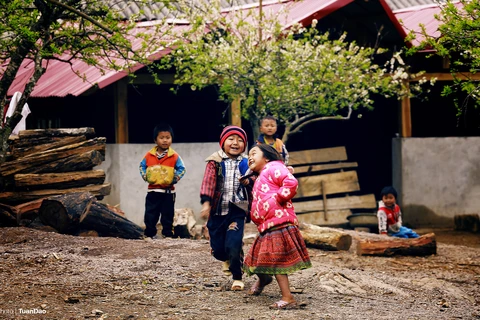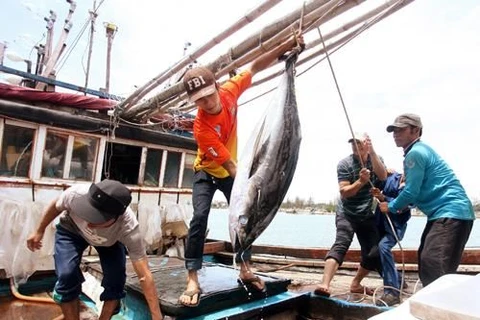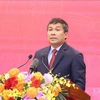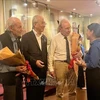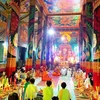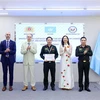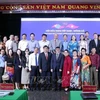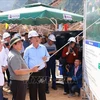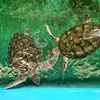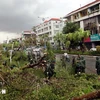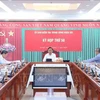Nghe An (VNA) – Located 24km from the coast of central Nghe An province, Dao Mat (Eyes Island) plays a significant role in economic development and defence-security strategy of the province and the north central region as well.
Lying 218m above sea level and covering an area of 2.2 kilometres square, Dao Mat comprises two smaller islets. From the mainland, the island look like a pair of eyes and is known as Eyes Island.
The Nghe An Memoirs by Second-rank Doctor Bui Duong Lich, an author living in the late Le and early Nguyen dynasties (18th century), wrote: “It is a small island, located in Dan Nhai sea, which looks to the mainland to safeguard the land from invaders”.
Legend has it that the island was where To Nuong, thought to have lived around 40AD, waited for her husband for a long time.
To Nuong’s native land was An Lac, Son Tay. Her husband’s homeland was Ham Hoan (now Nghe An). Both of them were commanders under the Trung sisters’ revolution against the Han invaders from the north. When the revolution was defeated, they lost each other.
To Nuong decided to row toward Ham Hoan to look for her husband. When she came near the destination, her boat was pushed to Quynh Nhai island by storm. On Quynh Nhai island, she was exhausted and her boat had been destroyed. She was then stuck on the island. Everyday, she looked at her husband’s homeland so the name of Dao Mat, or Nhan Son (Mountain’s Eyes) was given to the island.
According to defence specialists, Dao Mat has a strategic location and height, which serves as watching eyes protecting the north central coastal region.
Fifty-three years ago, on March 31, 1963, Company 32 of Division 324 set its base in Dao Mat to safeguard the country’s sea and sky. A monument has been built on the island to commemorate soldiers who died to protect the island.
Company 32 fought 297 enemy aircraft, 64 warships, 10 destroyers, one raider, two cruisers and one battleship, while rescuing 3,210 ships and 172 people.
Between 1965 and 1973, the US troops dropped more than 4,000 tonnes of bombs on the island, with an average of two tonnes per square kilometre.
In 1973, the island was honoured by the Party and State with the title “Hero of Armed Forces”.
The geographical structure of the island mostly comprises rock. However, it still has diverse vegetation cover, with fig trees considered as the symbol of the island.
Fig trees, which can grow between rocks, are not tall but strong and stable. Banyan trees also grow across the islands, with many old ones roots covering huge rocks.
The island also has a 201.8m lighthouse which was built in 2004, guiding vessels operating in the area.
A flagpole was also built on the island on September 9, 2015 by Vietnamese youths.
Recently, the island has seen many changes thanks to efforts by soldiers, the Party Organisation and Nghe An citizens.
However, due to the rocky terrain, the island faces a serious shortage of water.
Despite the difficulties, soldiers stationed on the island have built small reservoirs to keep water from small streams in the mountain for daily use. They have even grown vegetables and reared livestock, reducing dependence on goods from the mainland.
A telecommunication pole was also set up on the island, helping connecting islanders with their families on the mainland./.

